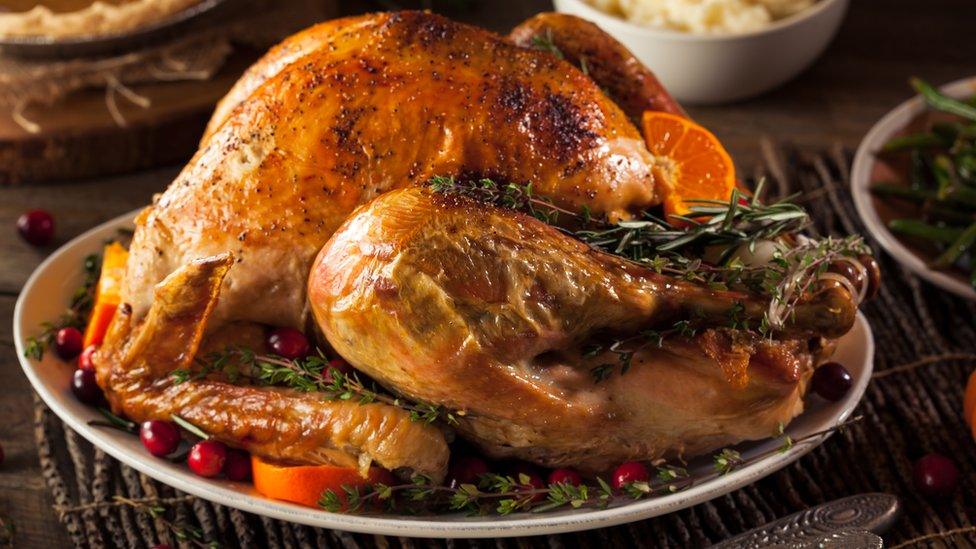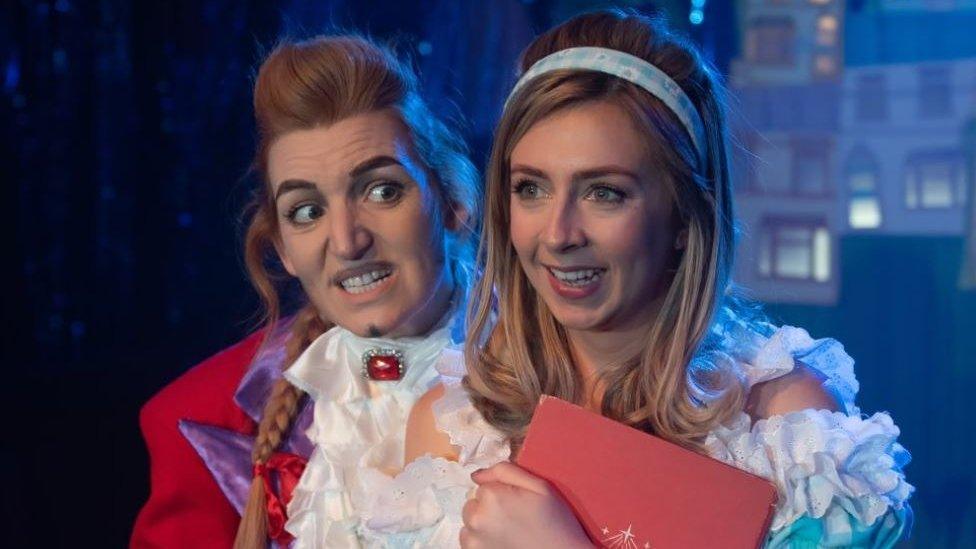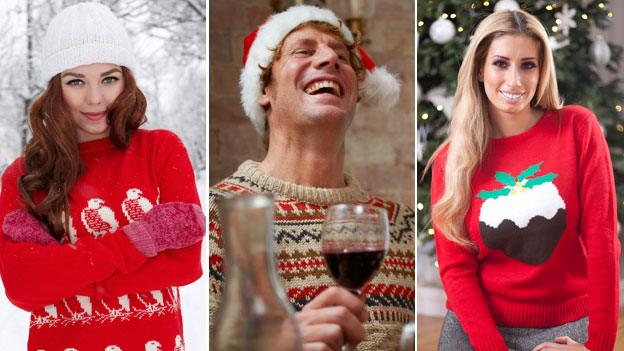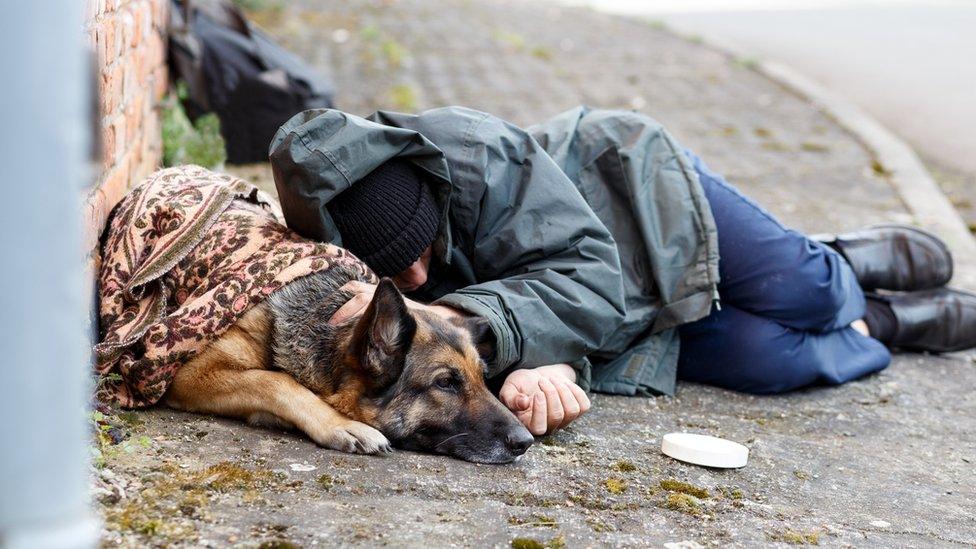Moist turkeys, Christmas jumpers and other festive morsels
- Published

This time of festive wonder can leave some of us, well, wondering
How do you manage a moist turkey? Where does the tradition of the Christmas jumper come from? Can you still have a fun festive season while heavily pregnant? These are some of the pressing questions readers have been asking the BBC. Want to find out? Yule have to read on then.

Christmas jumpers - why?

The Christmas jumper made a memorable appearance in the 2001 film Bridget Jones's Diary
Steve Wozencroft, 55, from Hereford, who has never worn or owned a Christmas jumper, asked what inspired this tradition.
"I don't recall Christmas jumpers being around in my childhood. It seems to be a fashion today," he said.
Dr Benjamin Wild, a cultural historian who specialises in the history of dress, wrote about this very subject., external
"The Christmas jumper can be traced to the heavy, warm sweaters that were hand-knitted in Scandinavia and Iceland before the 20th Century," he said.
"Characterised by contrasting bands of geometric patterns, which are popular in today's Fair Isle knits, the jumpers distinguished men from different communities."
When the Scandinavian sport of skiing took off and people needed warm clothing, they adopted the jumpers with patterns inspired by forest landscapes, he said.
"As affluent travellers returned from the ski slopes of Europe with their colourful knits, the humble jumper was elevated to a symbol of luxury and glamour," he explained.
Hollywood stars popularised the look and wore them in films, and people lived the dream by knitting them for themselves.
Throughout the 80s vintage looks made a comeback and the Christmas jumper returned. In 2012 charity Save the Children launched Christmas Jumper Day, on 14 December.

How can I enjoy Christmas while pregnant?

Amy Stanley and husband Marc are expecting their second child in March
Amy Stanley, 34, from Newcastle is 28 weeks pregnant with her second child.
She said she was missing nights out, wine and cheese.
"And there's no point buying maternity outfits just for Christmas," she said.
"Any tips on how to enjoy the festive period [while] pregnant?" she asked.
Emma Conway, who blogs as Brummymummyof2, said she swapped nights out for pyjama parties with friends, pizza and movies.
"Whilst you might not want to invest in a sparkly maternity dress, you can always splash out on an overpriced handbag, get your nails done or try and fit a few hours in getting a nice haircut," she said.
She also recommended scoffing selection boxes and an after-lunch nap to avoid the washing up.

Emma Conway said being pregnant at Christmas was the perfect excuse to leave the washing up to someone else
Although alcohol is off the menu, it's safe to eat brie and soft blue cheese if they're cooked, according to NHS advice., external
And hard blue cheeses, such as stilton, are safe to eat without cooking, it said.
You might also like:
Netmums editor in chief Anne-Marie O'Leary cooked and cleaned up after eight people when she was pregnant at Christmas.
"I will never forget the pain in my feet from standing up in the kitchen all day, while everyone else sat watching me busy around," she said.
"Learn from my mistake and make it clear that this Christmas you'll mainly be putting your feet up with a tin of Quality Street and the remote control. Sometimes being the odd one out can be a good thing."

How can I stop my turkey going dry?

Timing, basting and resting are key to the perfect roast turkey
Carrie Adam, 46, from Leicester asked: "How on earth do I stop my turkey from being dry? I've been cooking Christmas dinner for over 20 years, but I still haven't perfected it."
TV chef Rachel Allen, who put together a guide to the perfect turkey, swears by a 15-minute sizzle on a higher heat before turning down to roast.
"Cooking the turkey at a high temperature for a short time caramelises the fats, creating a delicious flavour," she said.
"[It] should be done at the start of the cooking as this extracts less moisture than it would at the end."
Timing is key, so use our Christmas roasting calculator to find out how long to cook your bird.
Allen recommends basting the juices over the top of the turkey every 30 minutes.
And it's time to stop cooking when you stick a knife in the thigh and the juices run clear.
Leave your turkey to rest for at least 30 minutes and up to 90 minutes after roasting for the juices to redistribute themselves and the meat fibres to relax, otherwise you will have a dry bird.

What inspired the pantomime tradition?

Tavis King, who lives and works in London, said there were no pantomimes where he grew up in America
Tavis King, 36, works as a private psychology tutor in Canary Wharf in London, but is originally from Towanda, Pennsylvania, in the USA.
He asked: "Where do pantos come from? As an American we didn't have them."
Pantomime is a great British tradition but it was developed from the Italian street theatre of the Commedia dell'arte in the 16th Century.
Theatre impresario John Rich introduced similar characters and themes of lovers, magic, chases and acrobatics into English comic plays in the late 1600s.
In the late 1700s, actor Joseph Grimaldi took the pantomime to new heights and the sets became more elaborate.
By the Victorian era, pantomime had become typical Christmas fare and actors today believe the much-loved genre deserves more respect.
- Published20 December 2018

- Published23 December 2012

- Published14 December 2018

- Published21 December 2016
